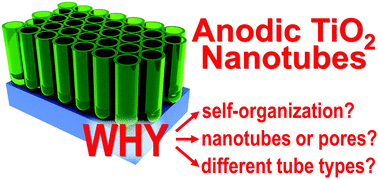Aligned metal oxide nanotube arrays: key-aspects of anodic TiO2 nanotube formation and properties
Abstract
Over the past ten years, self-aligned TiO2 nanotubes have attracted tremendous scientific and technological interest due to their anticipated impact on energy conversion, environment remediation and biocompatibility. In the present manuscript, we review fundamental principles that govern the self-organized initiation of anodic TiO2 nanotubes. We start with the fundamental question: why is self-organization taking place? We illustrate the inherent key mechanistic aspects that lead to tube growth in various different morphologies, such as ripple-walled tubes, smooth tubes, stacks and bamboo-type tubes, and importantly the formation of double-walled TiO2 nanotubes versus single-walled tubes, and the drastic difference in their physical and chemical properties. We show how both double- and single-walled tube layers can be detached from the metallic substrate and exploited for the preparation of robust self-standing membranes. Finally, we show how by selecting specific growth approaches to TiO2 nanotubes desired functional features can be significantly improved, e.g., enhanced electron mobility, intrinsic doping, or crystallization into pure anatase at high temperatures can be achieved. Finally, we briefly outline the impact of property, modifications and morphology on functional uses of self-organized nanotubes for most important applications.


 Please wait while we load your content...
Please wait while we load your content...